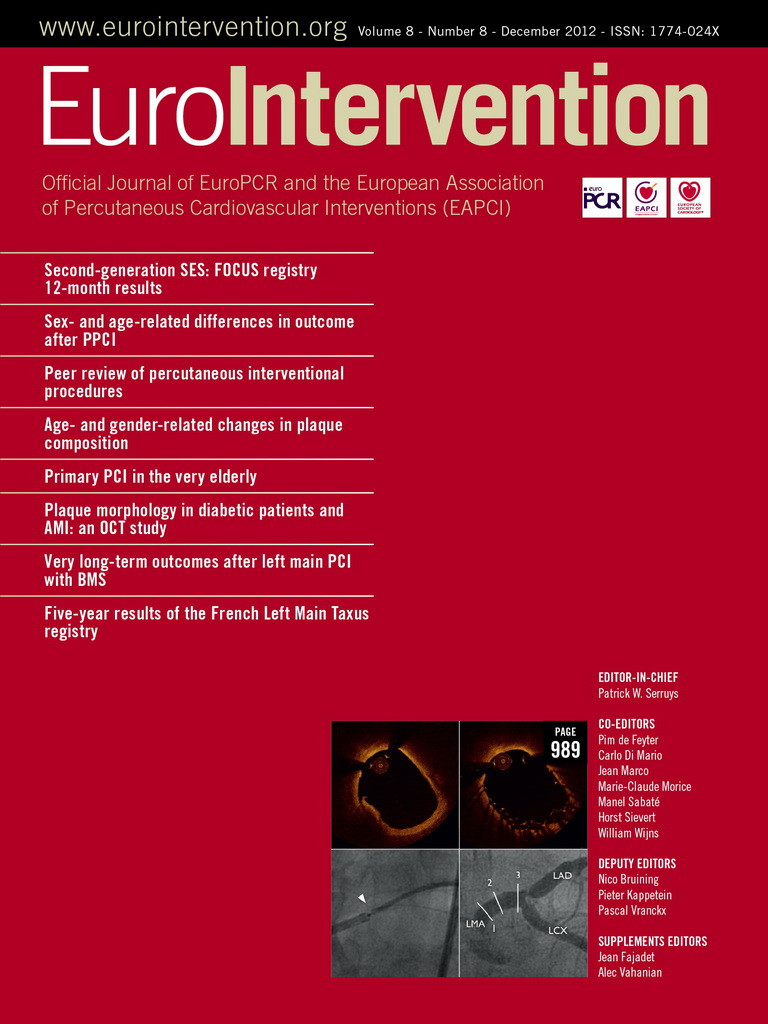On the last page of this current issue, the final issue of this year, we have dedicated a roll of honour to the reviewers who have contributed to the editorial process of the journal in the last year. On behalf of the entire EuroIntervention Editorial Board, we would like to thank them for their valuable input, since without reviewers there would be no journal.
Reflecting on our review process for this last year, it is obvious that it has become very complex and challenging. The announcement of our first Impact Factor in the summer has led to a doubling of submissions through our normal pathway. The European Heart transfers paper pathway is still increasing significantly and incidentally it must be mentioned that we also receive papers rejected after favourable reviews from even the bigger American journals such as the main journals Circulation and JACC.
With this increase in submissions, we have sought to strengthen the weekly EuroIntervention Editorial Board meetings by the addition of the International Associate Editors. This is a group of dedicated young investigators who call in on the phone every week to supplement the Local Editors. We must admit that this addition has produced some wonderful intellectual exchanges which have brought the meetings up to an even higher level, particularly in the debates regarding certain papers (pro or contra) since –due to the success of the journal– we are only currently accepting 25% of all papers submitted.
Many authors and reviewers would be interested to hear our observations on the review process from the back office, a sort of glimpse into the internal machine of EuroIntervention.
For each paper it has been the policy to invite three or five reviewers, an uneven number to reflect a democratic process. The expected outcome is a recommendation of 2-1 or 3-2 in terms of one of the following 1) accept as is, 2) publishable after minor revision 3) publishable after major revision 4) reject 5) reject, de novo.
It is noteworthy that we rarely receive an “accept as is” in a first round of review. A common initial reviewers conclusion is a divergence of recommendations, for example a minor revision, a major revision and a reject. There may be many reasons for this divergence. Sometimes the reviews received are quite superficial. These are easy to spot since the comments are by and large quite short, mainly returned to the editorial office just to comply with the deadlines in order to discharge him or herself from the review invitation commitment. These reviews are declared invalid and are not part of the editorial decision making. One could argue that the superficial reviewer be excluded from further review invitations, however, as the editorial decision letter and the reviewers comments are also sent in blind copy to all reviewers, we hope that the superficial reviewer will take note of the hard work of the other reviewers and be somewhat guilty of his or her response. Basically we think the key message here is respecting the manuscript and the efforts of the authors by affording more than a few causal glances at the manuscript and penning a few lines on it. Of course, the best action is the upfront action –if you don’t have the time or interest to review, it’s best to decline the invitation.
Luckily, the majority of reviews received are in depth, clearly showing that the reviewer is knowledgeable and well informed, taking adequate time to formulate his opinion. Even though they may conclude with an unfavourable recommendation, most will provide helpful suggestions to improve the paper for a submission elsewhere.
We have the impression that young reviewers are sometimes harsher than the established reviewers. It is difficult to judge if we have to deal with angry young men/women or maybe some form of immaturity. On the other hand, some older reviewers may appear complacent by systemically recommending a major revision for every paper.
There is also a national component in the review process, for example a Belgian reviewer can be quite tough on a Belgian author, while a British reviewer might be tougher on a British author.
And finally a major potential flaw is the unacknowledged conflict of interest from a reviewer, not in the financial or moral sense but more intellectually. They are working to dismiss or delay a possible publication on the competitors’ paper they are reviewing so as not to impede their own research. It is the responsibility of the Editorial Board to detect and counterbalance this; however, as many can imagine, it is practically impossible to know what’s cooking in the reviewer’s kitchen.
For all the observations we have described, we cherish our long-term reviewers who, year in, year out, deliver the right balance and criticism for a submitted paper. They are an invaluable cog in the scientific publishing machine. Without the reviewers it would be difficult to navigate through the potential pitfalls and help us navigate between Scylla and Charybdis.
They are an endangered species in a world where data production becomes more important and the “review turnaround time” and “acceptance rates” are the double-edged sword on which journals live and die.

